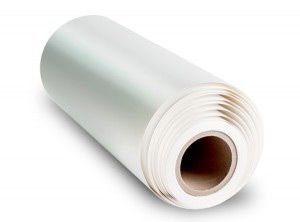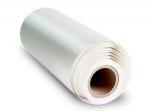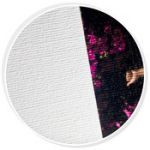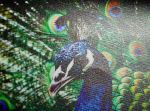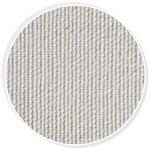Crystalline
Print it. Stretch it. Done.
The highest quality Gloss or Satin canvas
No varnish required
OBA Free/Archival
Requires photo black ink
Description
440GSM GLOSS INKJET CANVAS OR SATIN INKJET CANVAS ROLLS. OBA-FREE, BRIGHT WHITE.
Crystalline is a 440gsm (21mil) aqueous inkjet canvas that comes in both gloss and satin finishes. This high performance giclee canvas should be used with photo black ink and will deliver industry-leading dmax and colour gamut. It is ideal for high-end fine art and photography reproduction and looks incredible straight out of the printer.
Crystalline Satin inkjet canvas has a subtle gloss level that adds extra depth, density and vibrancy to the image when compared to an uncoated matte canvas such as Lyve inkjet canvas while still maintaining minimal reflection/glare. It might be described as having a similar kind of appearance in that sense to Lyve canvas coated with Timeless Satin print varnish.
Crystalline Gloss inkjet canvas delivers the most vibrant image quality with the darkest blacks and the 'punchiest' colours. This is achieved by the unique high gloss inkjet receptive coating and can be compared in appearance to Lyve with a good coating of Timeless Gloss print varnish. This is definitely a product to check out - your prints will look incredible.
Key Features
A NEW PLATEAU IN DMAX & COLOUR GAMUT -This canvas offers incredible colour and black density delivering the most outstanding image quality and overall pop without using a laminate.
NO VARNISH REQUIRED - This feature is extremely attractive to printmakers who are new to printing canvas and especially to those who prefer to avoid the labour of varnishing their canvas prints but still want a glossy canvas finish. While varnish is not required, longevity can be further extended by laminating (must be sprayed). See Resources tab.
NO CRACKING OR TEARING WHEN STRETCHING - Crystalline Satin and Gloss resists cracking and will not tear when stretched, with or without a coat of varnish.
INCREDIBLE SCUFF RESISTANCE - Even without print varnish, Crystalline giclee prints are highly resistant to scratches, scuffing and abrasion, far more so than a regular matte inkjet canvas.
OBA-FREE, YET STILL BRIGHT WHITE - Called 'Chromata White', this breakthrough technology has set Breathing Color apart for years. Normally OBA-Free products have a yellowish surface. Our 'Chromata White' technology, which we released in 2005, forever changed this by delivering OBA-Free with the desired white surface. This answered the needs of our customers to maximise the longevity of their prints while maintaining the most popular and desired look. Crystalline is almost unique as an OBA-Free bright white glossy canvas.
'Chromata White' gives the end-user the most stable platform on which to print photographs and fine art giclees without the metamerism issues or colour shift issues inherent on other canvases. Optical Brighteners compromise the attainment of true colour, they complicate profiling accuracy, and they inevitably deteriorate and yellow over time. You can read more about OBA's and their long-term effects on inkjet prints.
WATER-RESISTANT - Lack of water-resistance is a commonly known problem with currently available glossy canvas options. Not anymore. Crystalline canvas delivers an increased level of water-resistance against airborne moisture for increased longevity if you decide not to laminate.
EASE OF USE - One of the most compelling aspects of Crystalline is its ease of use. Since they require no varnish, Crystalline prints are immediately ready to stretch or mount.With our EasyWrappe and EasyWrappe Pro do-it-yourself gallery wrap system, canvas printing has never been easier.
Print Permanence Testing
Crystalline has been longevity tested and the results are as follows: When no varnish is applied, Crystalline has a life span of approximately 55 years before deterioration may begin (this is approximately half the life span of our Lyve and Chromata White canvases which are both independently archival certified for 100+ years. When our Timeless print varnish is applied, Crystalline's life span will improve to approximately 75 years before deterioration may begin.
*Note: Actual print stability will vary according to media, printed image, display conditions, light intensity and atmospheric conditions. Breathing Color does not guarantee the longevity of prints. For maximum print life display all prints under glass or lamination or properly store them. All of the descriptive information and recommendations for the use of Breathing Color products should be used only as a guide. Furnishing such information and recommendations shall in no event constitute a warranty of any kind by Breathing Color. All purchasers of Breathing Color products shall independently determine the suitability of the material for the purpose for which it is purchased. Seller’s and manufacturer’s only obligation shall be to replace such quantity of the product proved to be defective. Neither the seller nor manufacturer shall be liable either in tort or in contract for any loss or damage, direct, incidental or consequential (Including loss of profits or revenue) arising out of the use of or the inability to use the product. No statement or recommendation not contained herein shall have any force or effect unless in agreement signed by officers of seller and manufacturer.
Get A Trial Roll
If you are new to Breathing Color and would like to test this product, we highly recommend that you take advantage of the inexpensive Trial rolls offered which provide enough product for sufficiently running tests and creating samples. Trial rolls are limited to one per customer per product.
Downloads
Quick Start Guide
For printing tips, troubleshooting and additional info download the Crystalline Quick Start Guide
Coating Instructions
While Breathing Color recommend coating any aqueous canvas for maximum protection, Crysyalline has been formulated so that coating isn't necessary for most environments. It has good scratch and scuff resistance straight off the machine and can be stretched without signs of cracking/flacking on the edges. Crystalline also offers class leading protection against the effects of UV light (because it is OBA free) and therefore is a safer choice for customers that do not want to include lamination in their workflow.
However, some customers still prefer to varnish which does add an extra level of protectio. It is not possible to hand roll water based laminates, such as Timeless and Glmaour II on Crystalline. If you plan to varnish it must be appled via HVLP spray.
Related Videos
HOW TO DO A MIRROR EDGE IN PHOTOSHOP FOR A GALLERY WRAP
EASYWRAPPE STANDARD 1.25" - STAPLE METHOD
With Crystalline, due to the additional thickness of the canvas, it is advised that you staple the edges of the canvas to the back of the EasyWrappe bars. This will prevent the canvas from lifting off the edges of the bars.
EASYWRAPPE PRO 1.75" - STAPLE METHOD
With Crystalline, due to the additional thickness of the canvas, it is advised that you staple the edges of the canvas to the back of the EasyWrappe bars. This will prevent the canvas from lifting off the edges of the bars.
For more helpful videos on printing techniques, color management and more please visit Breathing Colors BLOG
I have issues with canvas sagging after being stretched
- Canvas sags more in the direction of the weave, typically horizontal
- Sagging can happen from under or over tightening
- Environment plays a huge part - high constant humidity will relax canvas
- For dry environments, spritzing the back of a sagging canvas with hot, distilled water can help re-tighten.
- Start stapling on longest dimension & staple clean line. Move to the opposite side, not around the edge of the frame.
- Add cross bars and corner keys after full framing.
- Putting a bead of archival glue on the bars as you set the edge helps hold tension and keep it all even and flat.
- Frame in a high humid environment then move to a drier environment.
- More information can be found in this article.
How should I handle Breathing Color media? What about storage?
To prevent the transfer of oils and dirt from your hands to the inkjet receptive coating of the media, white cotton gloves should be worn when handling the media. When not using the media, you should store it in its original packaging, exactly how it was shipped to you. Read more about our recommended handling and storage best practices on Breathing Colors blog, The Art of Printmaking.
My canvas prints "shrink" length-wise when they come out of my printer. How can I fix this?
Length-wise (or vertical) canvas shrinkage is typically caused by tension created on the printer while printing with canvas rolls. This shrinkage is normally quite consistent and can be compensated for through Photoshop. Read more about how to compensate for canvas shrinkage here on our blog, The Art of Printmaking.
I am seeing "banding" on my prints. What is causing this?
There are a few different things that can cause banding. Most commonly, you will see banding occur when there is a clogged nozzle or something else hardware related. Please follow the steps below to help identify the issue:
Ensure that your printer can handle the thickness of the media you are attempting to print on. In your printer's user manual, or by calling the manufacture, you can find the maximum weight that your printer will accept; make sure that the media doesn't exceed this maximum specification.
See Breathing Colors blog about doing a nozzle check and other maintainance on your printer.
If the nozzle check results look fine, proceed to check your platen gap settings and making sure other print settings are correct.
Do I have to let 17M, Silverada or Crystalline dry before mounting or stretching?
We recommend letting Silverada, 17M and Crystalline prints dry 1-2 hours before mounting or stretching for best results.
Testing & Evaluation - Trial Rolls
For testing and evaluation, we offer short trial rolls of all of our inkjet canvas, inkjet fine art paper, inkjet decor paper, and inkjet signage products that are sold at cost. Typically, trial rolls are 17"x10 feet. The purpose for this is to allow our customers to conduct a comprehensive evaluation of our products, cost effectively. There are several steps that should be taken when testing any new digital substrate for your printing business.
1. The substrate should be tested with several different images to be sure the product performs well with everything image-type that you intend to use it for (try a portrait photograph, a vibrant fine art print, a black & white piece, etc.). Make sure you are selecting images that are fairly different from one another with respect to color and tonal gradation for a thorough evaluation.
2. Show a few of your most important customers a print of their own work on the media you are testing. Maybe provide an example of your current media to illustrate a comparison. Explain the physical and archival attributes of the new substrate and the reasons that you are considering a switch. It is the printmakers job to educate their artists about all things printing-related, especially media.
3. Trial rolls provide enough media to create custom profiles, for those who are capable. Breathing Color also offers a free custom profile service, which requires approximately two square feet of printed media.
4. It is important to have enough media to leave a margin for error in case the first attempt had not been printed correctly (print settings, profile, platen gap, etc.).
5. For inkjet canvas: coating, stretching, and hand embellishment should also be tested.
My prints on Crystalline are curling. What can I do?
Any coated canvas—either glossy or satin—will be more susceptible to curling. This curling is most often caused imperfect atmospheric conditions. We have come up with the following quick start guide to help troubleshoot these issues: Crystalline Quick Start Guide
Do I need a separate ICC profile for the Gloss and Satin finish?
No. Both canvas finishes perform the same in terms of color output, density, gamut, and saturation. The only difference is the sheen of the canvas which does not affect the color output on Crystalline.
How do I print Crystalline on my HP Z series printer?
The best way is to profile Crystalline with a glossy paper setting, and use the Gloss enhancer on economy mode. This will cover the black ink, which is most susceptible to scuffing.
How do optical brightener additives (OBA) effect longevity of fine art prints?
Optical Brightener Additives (commonly referred to as OBA's) are widely used in paper coatings, textiles, and laundry detergents to increase the perceived "whiteness" of the treated products. OBA's work by absorbing light from the (invisible) ultra-violet end of the spectrum and emitting light in the (visible) blue/white range of the spectrum. This shift in the frequency of light energy, results in a whiter and brighter appearance of the treated product.
Many digital inkjet printmakers, who print using Epson 9800, Epson 7800, Epson 4800, and/or Canon imagePROGRAF iPF9000 prefer a bright white surface to print on, to the true surface color of their naturally-yellow substrate. As a result, paper manufacturers are adding OBAs to the digital inkjet receptive coating (IRC) used on their fine art papers and inkjet canvas'. The reflection of white light emanating from the OBAs will completely overwhelm the paper's natural color, creating a higher perceived whiteness, which artificially enhances the maximum color gamut and black density of the printed image. Popular rag papers that contain OBAs are the Hahnemuhle Photo Rag, Somerset Velvet, and Breathing Color Elegance. These papers are known for their bright white surface and excellent color gamut and black density.
While OBA's appear to be an effective solution for enhancing the whiteness and overall image quality of inkjet paper, this conclusion is slightly premature. The fact is, that OBA's can pose a serious threat to the integrity and longevity of a fine art print by accelerating metamerism and causing color shifts, and yellowing over time. Let us explore each of these issues in further detail.
What is metamerism? Harald Johnson defines metamerism as a normal phenomenon relating to how the human eye perceives color. It occurs when "two different color objects have the same color appearance to a normal human viewer under one light source (metameric match) but look different under another light source (metameric mismatch)." (*1) To a printmaker, this means that the painstakingly precise color information applied to each print will be compromised whenever that print is viewed under a different light source. Thus, one primary goal of any printmaker should be to avoid metamerism in order to validate the time spent on color management and to uphold the integrity of the reproduction. After all, what good is a reproduction if it does not closely match the original?
Now that we understand metamerism and why it should be avoided, how do OBAs fit into the picture? When OBAs are exposed to UV light, the treated paper appears brighter and whiter. When OBAs are not exposed to UV light (in the evening), the OBA's "lose activity", causing your eye to actually see the paper color without OBAs - which will look creamy or somewhat yellowed. This amount of "OBA activity loss" will vary constantly depending upon how much exposure the paper has to UV light. Picture the lighting conditions inside of an art gallery and how they will change depending upon the time of day. This will have a subsequent effect on the art itself, as it is exposed to various levels of UV light throughout the day. For example, your print could be displayed in a gallery near a window where direct or indirect daylight may be illuminating the print. In a case like this, where there is a high UV component, inkjet papers that contain OBA's will strongly fluoresce and will appear bright white. However, in the evening when the same print is displayed with low or non-existent UV component (or incandescent tungsten illumination), the OBAs will not fluoresce, making the paper appear yellow, therefore causing your eyes to see the image color differently.
How does this happen? Think about it. Your "bright white" paper is profiled to your printer so that the computer can translate color information accurately to the substrate. Anyone with experience creating color profiles will tell you that the "white point" of your substrate is an integral component of a profile's accuracy. If the whiteness of your paper changes, so must your profile. This is precisely how OBAs are constantly working against your color management. As the perception of whiteness of the paper is constantly changing, so do the perception of colors. Here's a good test. If you can find a paper offered in both bright-white and natural-white, try using the natural-white paper printing profile on the bright-white paper. You will be surprised by how different your results will be.
Next, take both papers and observe the whiteness in broad daylight. The paper with optical brighteners should look extremely bright white, while the paper without optical brighteners will look creamy. Then, take the two papers indoors where they are exposed to no sunlight and observe the whiteness. You probably will not be able to tell a difference between the two. At the very least, you will notice that the paper with OBAs no longer looks so white and bright. Many times, the OBA-Free paper will appear whiter. Nevertheless, the important point is that your OBA-Free paper has remained consistent under both lighting conditions, while the paper with OBAs has been inconsistent. This inconsistency directly correlates to the inconsistency that your image color will have under different lighting conditions. Still, overall white point is only one of the risks associated with using substrates that contain OBAs.
Another problem with OBAs is that they have been known to decompose over time and can cause yellow stains to appear on your prints. It is possible to avoid this issue with UV inhibiting products and overcoats that are designed to reduce the UV activation of OBAs, but their effectiveness in this regard has yet to be proven. Therefore, regardless of the post-print protective coating that can be applied, the fact remains that any fine art print made on a paper manufactured with OBAs is a print at risk. To quote Henry Wilhelm from the Wilhelm Research Institute, "When long-term image permanence is an important consideration - or may eventually become an important consideration - fluorescent brighteners should be avoided".
This associated risk is precisely why OBA-Free papers have rapidly gained popularity in recent years despite their "Natural White" color, which could be considered creamy or even yellow. Of course some printmakers have chosen to use OBA-Free papers because they specifically like the warm tone of the paper, but the majority of the market is avoiding papers manufactured with OBAs because they (1) enhance metamerism and (2) they are a potential risk to the longevity and integrity of a substrate. A few examples of popular OBA-free papers are Epson's Ultrasmooth Fine Art Paper, and Breathing Color's Sterling Rag 210.
Printmakers who use OBA-Free papers simply eliminate the entire element of what can be called "OBA-associated Risk" from their business. These printmakers know that metamerism is a problem that should be minimized whenever possible - certainly never enhanced. Furthermore, OBA's have degradation potential and up to this point there is no guarantee that anything will last. Nevertheless, if an artist or photographer specifically requests that their artwork be printed on a paper manufactured with OBA's, a disclaimer should be issued, clearly explaining the facts and associated risks. Ultimately the customer should be left with the decision of how they want their art to look.
In an industry so obsessively tied to color accuracy and long-term print stability, it is a wonder why OBA-Free papers are not more commonly used than papers manufactured with OBA's. Art sells because of how it looks and in this business there is no room for error. Therefore, anyone who is involved in this relatively infant industry of selling printed art has genuine incentive to make color integrity a top priority. As further research is performed on the subject of OBA's, this industry will become more educated which will most likely cause a shift towards the widespread use of OBA-Free papers.
It is for this reason that Breathing Color has been conducting a great deal of research and development in quality paper manufacturing, which has resulted in the latest technological breakthrough "Chromata White". The Chromata White technology allows Breathing Color to create a highly stable white base paper/canvas without the use of harmful OBA's or any other fluorescent brightening additives. Color shifting is reduced by stabilizing the whiteness of the base substrate with a special anti-oxidation technology that even further protects printed images. Furthermore, metamerism is minimized by quenching the ultraviolet excitation wavelengths resulting in a more stable illumination of an image under different spectral power distributions.
By using Chromata White inkjet papers and canvas', printmakers now have the opportunity to get the best of both worlds. They eliminate all OBA-associated risk, and they have bright white surfaces to make beautiful prints that uphold the highest standards of color integrity that are possible today.
When stacking coated prints what kind of interleaving paper should I use?
The best way to protect coated prints when stacking or sending out to ship would be to wrap the print in Glassine paper. You do not want to separate your prints with paper that contains acid in it. If acid comes into contact with your print it may cause the print to turn yellow. You can find many different types of Glassine papers online, or at your nearest art supply store. The main thing to keep in mind when looking for this type of paper is to make sure the paper has a neutral pH level, or acid free.

